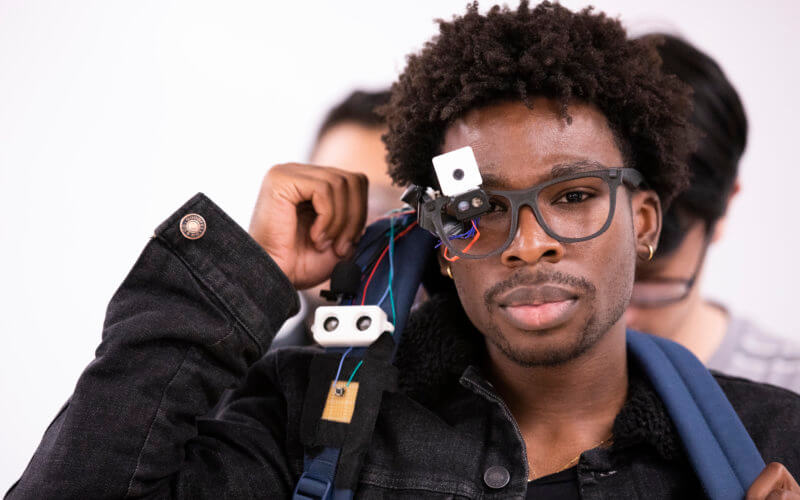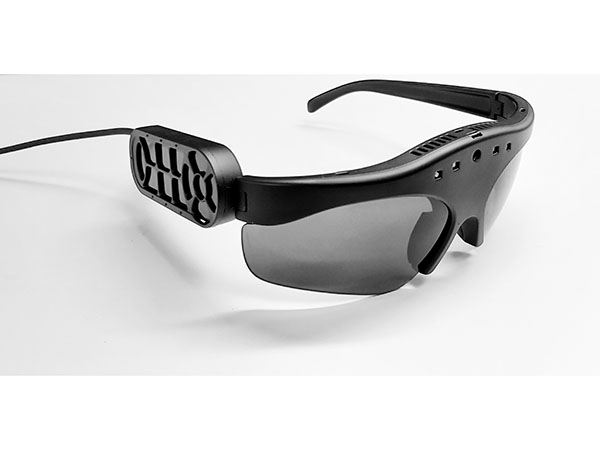The Future of Assistive Technology for the Blind: Empowering Independence
The Future of Assistive Technology for the Blind: Empowering Independence
Blog Article
Innovative Solutions in Assistive Innovation for Visual Disability
The landscape of assistive innovation for aesthetic impairment is advancing swiftly, offering a variety of ingenious remedies that boost ease of access and independence. From advanced smartphone applications that facilitate navigating to wearable gadgets created for real-time guidance, these tools are reshaping the experiences of those with visual impairments. The combination of wise home innovations and educational sources has the prospective to promote better area involvement. Nevertheless, the implications of these advancements raise vital inquiries regarding their access and performance in varied contexts, calling for a better exam of their wider effect.
Developments in Smart Device Applications
In the last few years, innovations in mobile phone applications have considerably transformed the landscape of assistive innovation for people with aesthetic impairments. These applications leverage the effective sensors and capacities of modern smartphones to provide individuals with tools that boost freedom and availability in their every day lives.
Remarkable among these innovations are applications created for things acknowledgment, which make use of the smartphone's camera to determine items and give spoken summaries. Such features empower customers to navigate their settings much more properly, whether recognizing products in shops or finding individual possessions in the house. Additionally, text-to-speech applications have actually enhanced dramatically, allowing individuals to catch published text through their gadget's camera and receive instant sound feedback, consequently assisting in analysis and understanding.
Navigation applications customized for visually impaired individuals have actually additionally emerged, supplying auditory assistance and comprehensive area info. These devices supply essential assistance for flexibility, allowing individuals to go across unfamiliar spaces with confidence. Community-driven applications have cultivated social communication and source sharing among individuals with visual impairments, developing an encouraging network that boosts their high quality of life. Overall, smart device applications have ended up being indispensable allies in promoting autonomy and access for people with aesthetic problems.
Wearable Gadgets for Navigating
Wearable tools for navigating have actually become a groundbreaking solution for people with visual problems, providing hands-free assistance that improves mobility and alignment. These tools generally use innovative modern technologies, consisting of GPS, ultrasonic sensors, and expert system, to give real-time responses and direction to customers as they browse their atmosphere.
One significant example of wearable navigating technology is wise glasses, which can identify obstacles and relay auditory or haptic feedback to the user, enabling for safe and effective activity in different settings. Various other tools, such as vests and belts equipped with sensing units, can in a similar way inform individuals of their environments by providing notifies regarding nearby things or modifications in surface.
Additionally, many wearable devices integrate with smart device applications, enabling individuals to tailor their navigating preferences and obtain tailored route pointers. This customization can considerably enhance the customer experience, encouraging individuals to take a trip with higher confidence and freedom.
As innovation remains to create, the potential for wearable navigating gadgets to boost the lifestyle for people with aesthetic impairments remains significant, leading the method for more easily accessible and comprehensive atmospheres.
Smart Home Innovation Combination

Additionally, smart devices geared up with tactile interfaces or auditory feedback offer instinctive interactions that cater specifically to the requirements of those with visual disabilities. For example, wise fridges can introduce their components and expiration days, while wise stoves can lead users through the food preparation procedure with audio instructions.
Home automation systems, such as clever buzzers and safety and security cams, offer peace of mind by allowing individuals to receive informs and access live feeds using their mobile devices, improving individual safety (AI-powered visual aids). Additionally, combination with smart devices and tablets ensures that users can handle their home atmosphere from anywhere within their facilities
As wise home technology proceeds to evolve, it holds the prospective to change the living experiences of people with visual problems, promoting freedom and boosting lifestyle in a progressively linked globe.

Educational Tools and Resources
Accessibility to efficient academic tools and resources is essential for individuals with aesthetic impairments, as it encourages them to engage completely in their learning experiences. Various assistive innovations have been developed to boost accessibility and foster independent understanding.
Furthermore, educational software program particularly developed for aesthetically impaired individuals offers features such as high-contrast modes and customizable message sizes. These devices suit diverse discovering designs and guarantee that students can tailor their academic experience to their requirements.
Moreover, access to audio books and digital collections expands the range of readily available understanding products, allowing pupils to explore subjects extensive without the limitations enforced by typical print sources. Joint platforms that integrate ease of access features also help with group projects, making certain that visually impaired students can contribute meaningfully together with their peers.
Area Assistance and Engagement
A robust network of area support and engagement is necessary for individuals with visual impairments, cultivating an inclusive atmosphere where they can thrive. Recommended Reading Community companies, neighborhood campaigning for teams, and volunteers play an essential duty in giving resources, information, and friendship, which are important for boosting the quality of life for those impacted by visual impairments.
Engagement activities such as workshops, gatherings, and assistance teams not just promote ability development however likewise promote social interaction, lowering feelings of isolation. These initiatives motivate people to share experiences, successes, and difficulties, consequently strengthening community bonds. Furthermore, collaborations with neighborhood companies can cause better accessibility in public spaces, additionally integrating people with aesthetic impairments into the community.
Innovation additionally boosts area involvement via on the internet platforms that offer virtual support groups and sources, allowing people to link despite geographical barriers. By using both in-person and electronic solutions, areas can create a comprehensive assistance network. Ultimately, fostering collaboration among numerous stakeholders-- including family members, instructors, and healthcare specialists-- ensures that individuals with visual impairments obtain the alternative support needed to navigate life successfully and with dignity.
Final Thought
Cutting-edge remedies in assistive innovation for aesthetic impairment substantially enhance the quality of life for individuals dealing with these obstacles. The combination of smartphone applications, wearable devices, smart home modern technology, and educational tools cultivates better self-reliance and accessibility.
The landscape of assistive technology for visual impairment is advancing quickly, providing a range of cutting-edge services that boost accessibility and freedom. Community-driven applications have promoted social communication and source sharing amongst individuals with aesthetic problems, developing an encouraging network that improves their top quality of life. Overall, mobile phone applications have actually come to be indispensable allies in promoting freedom and ease of access for individuals with aesthetic disabilities.
Many individuals with visual impairments are finding greater freedom via the assimilation of clever home technology.Ingenious options in assistive modern technology for visual disability considerably enhance the quality of life for individuals dealing with these difficulties.
Report this page